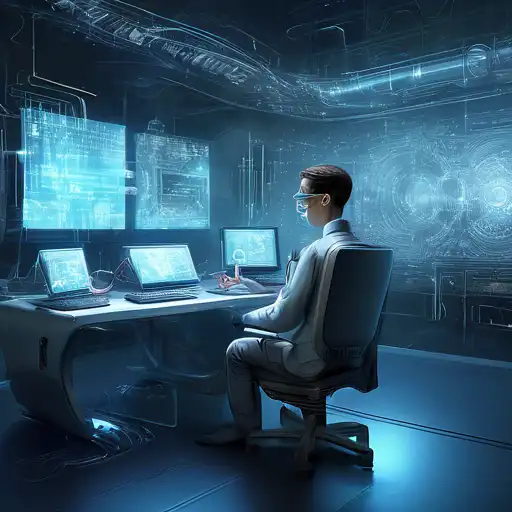Introduction to Computer Vision Technology
Computer vision technology has undergone significant transformations over the past few years, driven by advancements in artificial intelligence (AI) and machine learning (ML). This technology enables machines to interpret and understand the visual world, revolutionizing industries from healthcare to automotive. In this article, we explore the latest innovations in computer vision and how they are setting the stage for a future where machines can see and understand the world as humans do.
Key Advancements in Computer Vision
The field of computer vision has seen remarkable progress, thanks to deep learning and neural networks. These technologies have improved the accuracy and efficiency of image recognition, object detection, and facial recognition systems. Below are some of the most notable advancements:
- Enhanced Image Recognition: Modern algorithms can now identify and classify images with near-human accuracy, enabling applications in security, retail, and more.
- Real-time Object Detection: Advances in processing power and algorithm efficiency have made real-time object detection a reality, crucial for autonomous vehicles and surveillance systems.
- 3D Image Processing: The ability to process and interpret 3D images has opened new possibilities in medical imaging and augmented reality (AR).
- Facial Recognition: Improved facial recognition technologies are being used for security purposes, personalized marketing, and even in identifying genetic disorders.
Applications of Computer Vision
Computer vision technology is being applied across various sectors, demonstrating its versatility and potential. Here are some of the most impactful applications:
- Healthcare: From diagnosing diseases through medical imaging to assisting in surgeries, computer vision is transforming patient care.
- Automotive: Autonomous vehicles rely on computer vision to navigate safely, interpret traffic signs, and detect pedestrians.
- Retail: Retailers are using computer vision for inventory management, customer behavior analysis, and enhancing the shopping experience with AR.
- Security: Surveillance systems equipped with computer vision can identify suspicious activities and individuals, improving public safety.
Challenges and Future Directions
Despite its advancements, computer vision technology faces challenges such as privacy concerns, the need for large datasets, and computational costs. However, ongoing research in areas like machine learning and neural networks promises to overcome these hurdles, paving the way for more sophisticated and accessible computer vision applications.
The future of computer vision is bright, with potential breakthroughs in real-time video analysis, more accurate object recognition, and integration with other AI technologies. As these advancements continue, computer vision will play an even more critical role in shaping the future of technology and society.
Conclusion
Computer vision technology has made leaps and bounds, thanks to the integration of AI and ML. Its applications across various industries highlight its transformative potential. While challenges remain, the continuous evolution of this technology promises to unlock new possibilities, making our interaction with machines more intuitive and seamless. The advancements in computer vision are not just technological milestones but stepping stones towards a future where machines can perceive the world in ways we once thought impossible.
